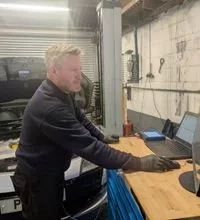Automotive education: where has all the talent gone?

Automotive is struggling to bring in the skills it needs to succeed in the future, whether that’s new talent coming into the industry or making sure those already in the sector have the right skills.
The latest IMI Automotive Education Report highlights the need for more EV and ADAS qualified technicians if the industry is to meet the ever increasing demand for those skills. It also puts the focus on apprenticeship numbers and how they’re funded.
According to the IMI’s latest research in the first quarter of 2024, education regulatory authorities reported that 3,373 technicians achieved EV certification, including those who have reached an eligible IMI accreditation, bringing the total number of certified EV technicians in the UK to 55,531.
The report goes on to say: “Analysis of unofficial IMI data reveals that the first quarter of 2024 looks positive, with an estimated 3,300 certifications, like levels in Q2 2023. This would bring the total number of qualified technicians to 58,800, representing 24% of technicians in the UK.”
There’s a problem however. If you project forward the number of EV-qualified technicians will be 121,000 by 2031, increasing to 150,000 by 2035. But the projected demand will likely top 124,000 by 2031 and 166,000 by 2035.
“This indicates a potential skills gap of 3,000 in 2031, increasing to 20,500 by 2035, and highlights the continuing need for technicians to continually train,” according to the IMI research.
EV skills aren’t the only area highlighted as being a possible concern. The rise of advanced driver assistance systems means that more technicians need to update their skills so they’re ready for vehicles with ADAS technologies onboard to roll into the workshop.
A growing sector
The number of ADAS-fitted vehicles on the road is already growing quickly. Around 13% of the UK car fleet has some degree of Level 2 autonomy using a mixture of radar, camera and even lidar sensors to help guide the vehicle in certain driving situations. And this is forecast to increase to 50% by 2032.
To be able to service those vehicles the IMI estimates that 156,000 trained technicians will be needed to support this growth. Unfortunately the growth in technicians with the right skills is growing slowly.
“In the first quarter of 2024, regulatory authorities issued 414 ADAS-related certificates and accreditations eligible for TechSafe, bringing the total number of certified EV technicians in the UK to 4,187. This marks one of the strongest quarters to date.
“However, analysis of unofficial IMI data reveals a drop in the second quarter of 2024, with 238 awards issued. This brings the total number of qualified technicians to 4,425, representing just 2% of technicians in the UK,” according to the IMI’s Automotive Education Report.
There are some unknowns with predicting the exact needs for the industry moving forward, especially the rise of software-managed diagnostics, but certain roles, such as body repair and glazing, will definitely need skills, knowledge, and understanding of ADAS technology in the future.
Bringing skills in
While it’s crucial that those already in the industry bring their skills up to date, adding new talent to the sector through apprenticeships is critical. Official figures show a complicated outlook.
“In the first six months (August to April) of the academic year 2023/24, there were 6,320 automotive apprenticeship starts. This is 7% lower than the same period last year, but 6% higher than the same period in 2021/22,” according to IMI research.
Making people understand what automotive has to offer is incredibly important to encouraging more talent to come into the industry, making sure that more see the opportunities and the varied and exciting future ahead for the sector.
Arguably one of the key areas is funding apprenticeships. The Apprenticeship Levy while setup to help businesses bring in new talent hasn’t always been well understood or used. Highlighted again in the IMI’s research.
“In first half 2023/24, ASA levy funds support 67% of all apprenticeship starts, but only 53% of automotive apprenticeship starts depending on these funds. This marks a decrease from the previous year, where 61% of automotive apprenticeships were levy-funded,” it states.
Perhaps with a new government and Labour determined to introduce a Skills and Growth Levy funding will become more streamlined making it simpler to access and use, helping pay for an increase in automotive apprenticeships.
Automotive faces a range of challenges, many of them based on making sure there’s a big enough pool of talent that have the right skills to succeed as the sector evolves. Hopefully the next research released by the IMI will show improvements, with more people taking on the skills to thrive in the future.
Get the best automotive insight and head to the IMI’s research hub to read the latest sector reports




